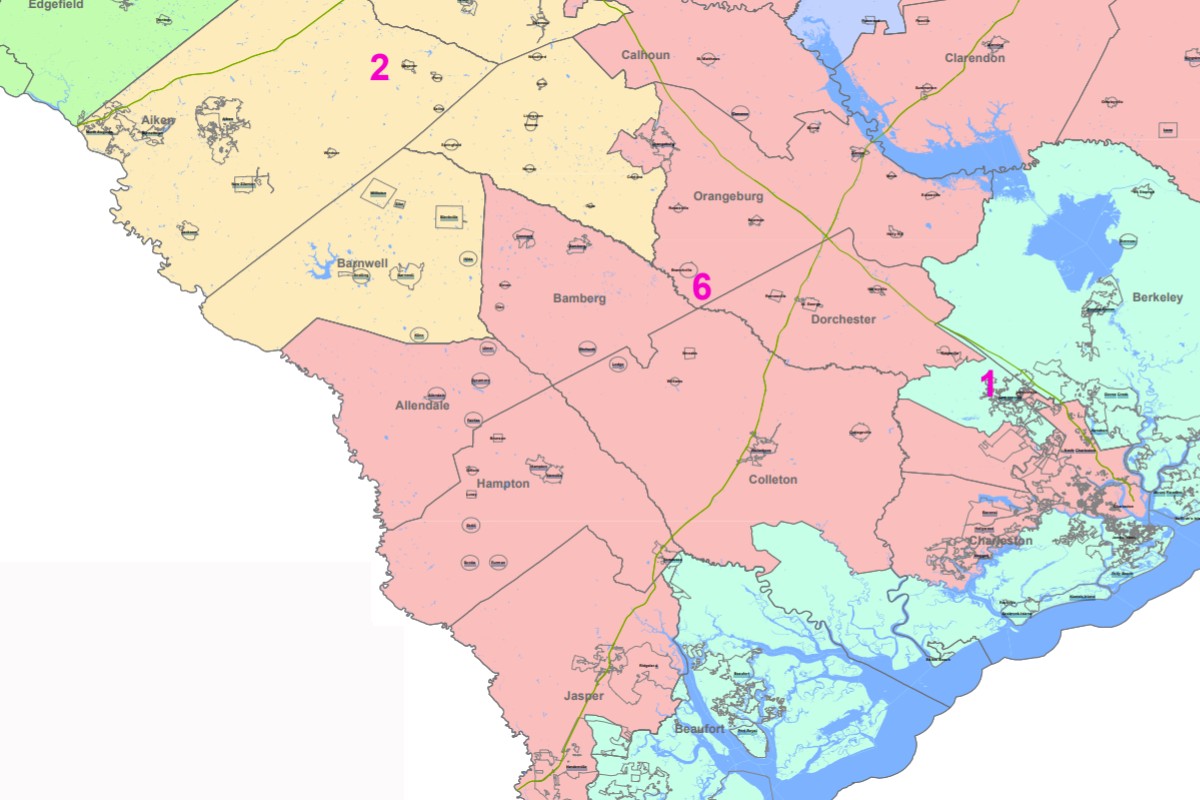
By Skyler Baldwin | The S.C. Senate on Thursday approved a new map for congressional districts that some advocacy groups and political leaders call “blatant gerrymandering,” leading many to predict federal legal challenges when districts become law.
Over the last few months, leaders in the General Assembly have reshaped S.C. House, Senate and congressional districts by drawing new lines to account for population shifts in the 2020 census. This reapportionment of district lines is required by the U.S. Constitution every 10 years after the census. How the lines are drawn has a huge impact on how the state is represented in Congress. On Thursday, senators approved a plan that would heavily favor Republicans in six of seven congressional districts, despite a Democratic proposal to have four GOP-leaning districts, one Democratic-leaning district and two competitive seats.

“This is a method of election that’s nothing new,” former congressman and current S.C. gubernatorial candidate Joe Cunningham said at a Jan. 17 press conference. “It’s called gerrymandering. Incumbent lawmakers get to draw their own district lines to their own advantage, making it virtually impossible for them to lose their elections and ensuring one-party rule.”
Senate Republicans point to similarities between the new map and current district lines as a strength of the proposal. S.C. Sen. Chip Campsen, R-Charleston, on Thursday said the proposal with the least amount of change adheres to traditional redistricting principles by retaining constituent consistency and preserving the cores of congressional districts.
Charleston, which currently is in the First Congressional District, has grown more competitive in recent years, having elected Cunningham, a Democrat, in 2018, and Nancy Mace, a Republican, in 2020. But with the new map, Charleston would be removed from the First District and placed in the Sixth District, a majority-minority district currently held by U.S. Rep. Jim Clyburn. The shift would make the First District more favorable to Mace and the GOP.
About 54 percent of voters in the newly proposed First District voted for Republican Donald Trump for president in 2020, about 2 percentage points higher than the district’s current makeup, according to a report from Associated Press.
The American Civil Liberties Union (ACLU) of South Carolina previously sued the state in December, citing the state’s “delayed redistricting process, which largely avoided public input and left electoral districts wildly out of proportion just months before election season” in a Tweet posted Dec. 24.
Now that the congressional map has been approved by the Senate, it is one step closer to seeing legal action.
 “The ACLU and the NAACP [National Association for the Advancement of Colored People] are already in court over redistricting on issues of transparency and the [S.C.]House map, which is terrible,” said Lynn Teague, a vice president with the League of Women Voters of South Carolina. “All they have to do is add the congressional map to the lawsuit once it’s decided on.”
“The ACLU and the NAACP [National Association for the Advancement of Colored People] are already in court over redistricting on issues of transparency and the [S.C.]House map, which is terrible,” said Lynn Teague, a vice president with the League of Women Voters of South Carolina. “All they have to do is add the congressional map to the lawsuit once it’s decided on.”
Teague said the League historically fights alongside other civil rights groups, but she said sitting out of the court battles frees the organization up for other kinds of activism.
“It’s a division of labor,” she said. “We are working very hard on the lobbying side, making sure the legislative record shows everything it needs to show to illustrate the problems — the gerrymandering — we’re working on public education and information, because once you’re in court, it limits what you can and can’t say or do.”
Representatives from the ACLU did not respond to requests for comment.
According to a FiveThirtyEight.com report on the redistricting process, the new map leaves the state with no competitive districts, a slight change from the previous iteration, which featured one slightly competitive district.
Cunningham warned at the press conference that the change would make it easier and more likely for sitting politicians to lean further into their political base and away from reasonable leadership.
“Without competitive districts, the politicians have no incentive to appeal to voters outside of their base,” he said. “They become more partisan and more extreme, and Congress becomes even more dysfunctional. That’s why we want to keep Charleston together … We aren’t asking you to draw a Democratic district. We’re here to ask you to draw a fair district.”
The Senate made minimal changes to the House-proposed congressional map, so the proposal now heads back to the House for final approval, but there may be another step in the process.

“I believe the congressional lines approved by the House and those approved by the Senate will most likely have to go to conference committee,” said S.C. House Speaker Pro Tempore Tommy Pope, R-York.
The committee would then hammer out the differences between the two maps and send it back to both chambers for final approval before sending it to the governor to sign.
- Skyler Baldwin is a reporter with the Charleston City Paper. Have a comment? Send to: feedback@statehousereport.com.















 We Can Do Better, South Carolina!
We Can Do Better, South Carolina!